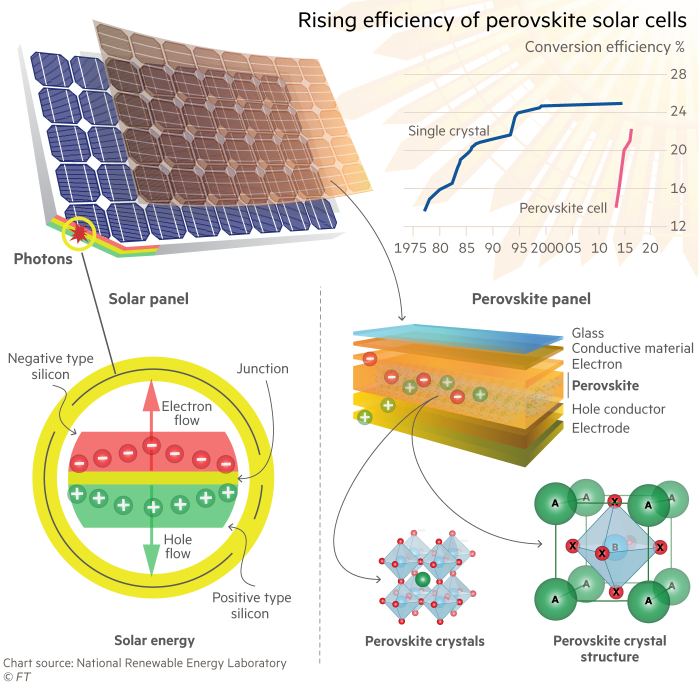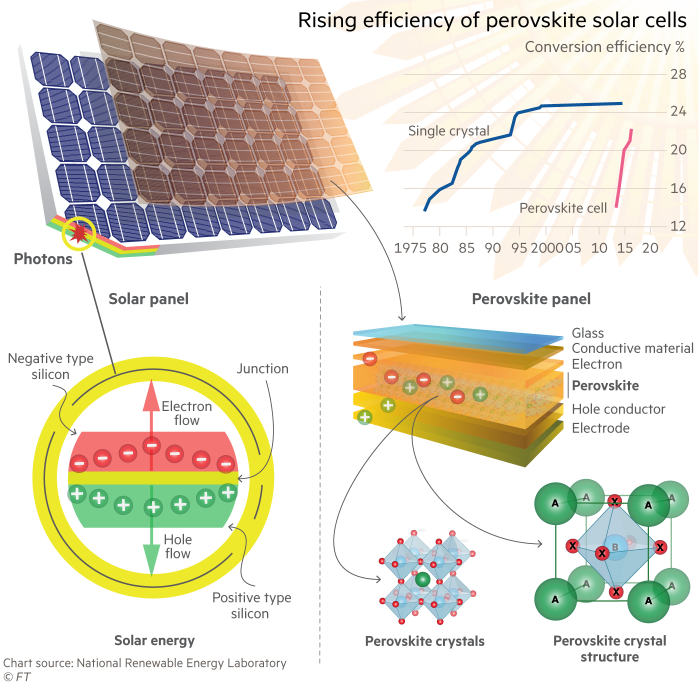Climate change as a result of rising CO2 levels is a consequence of the expanding global economy’s demand for cheap energy. Solar power is often held up as the most promising out of a raft of emerging renewable technologies. Yet, despite recent falls in solar panel prices – a result of enormous investment in silicon panel based technology – and growing economies of scale, solar power still struggles to compete against natural gas on price and faces questions about its sustainability due to the resource and energy intensity of its production.
Perovskite Solar Panels offer an opportunity to increase the efficiency and drastically reduce the costs of solar production. Perovskite panels are based on Perovskite Crystals, a natural growing that are very good at absorbing light, and have been shown to have a power conversion efficiency of 25 per cent. Perovskites have so far outperformed other new solar materials — such as dye-sensitised solar cells or organic photovoltaics — in their ability to absorb the sun’s power efficiently. Moreover, Perovskite crystals can be produced at relatively low temperatures, unlike silicon which requires a lot of heat to make a wafer. They also do not require large mining efforts as crystals can be made out of everyday materials.

The challenge is twofold. First the crystals have to be kept dry (they dissolve in humid conditions). Second, just as oil and gas worked to put the emerging solar panel industry a decade ago, the now increasingly entrenched Silicon Based panel industry acts as a block on newer technology. One possible answer comes from Oxford PV, an university start up, which places a layer of Perovskite crystals on top of convention silicon cells. Tandem cells are 10 per cent more efficient than silicon cells alone. It could be a way for the new material to break into the silicon-dominated market.


